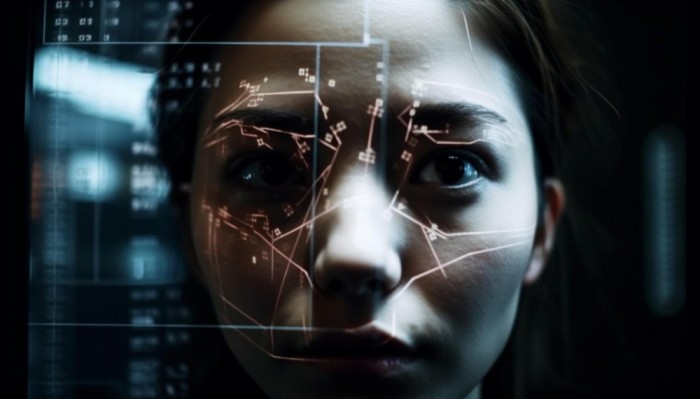Witness the Marvels of Computer Vision as AI Transforms Images into Invaluable Insights!
Introduction
Imagine a world where machines can perceive and understand the visual information surrounding us just like humans do. Thanks to the remarkable advancements in Artificial Intelligence (AI), this vision has transformed into reality through the groundbreaking field of computer vision. In this article, we will embark on a fascinating journey to explore the wonders of computer vision and its ability to convert pixels into invaluable insights.
The Power of Computer Vision
What is Computer Vision?
Computer vision is a branch of AI that focuses on enabling computers to extract meaningful information from visual data. By leveraging algorithms and deep learning techniques, computer vision systems can analyze images, videos, and other visual inputs to recognize objects, identify patterns, and even understand human gestures and emotions.
Applications of Computer Vision
Computer vision has revolutionized numerous industries by offering transformative applications that were once only possible in science fiction. Let’s explore some of the key domains where computer vision has made a significant impact:
- Healthcare: Computer vision aids in medical diagnostics, enabling early detection of diseases and assisting in surgical procedures with enhanced precision.
- Autonomous Vehicles: It plays a vital role in self-driving cars, enabling them to perceive the surrounding environment, identify obstacles, and make real-time decisions.
- Retail: Computer vision facilitates automated inventory management, cashier-less checkout systems, and personalized shopping experiences.
- Manufacturing: It enhances quality control by inspecting products for defects, optimizing production processes, and ensuring workplace safety.
- Security and Surveillance: Computer vision assists in facial recognition, object tracking, and anomaly detection, bolstering security systems.
- The Inner Workings of Computer Vision
- Image Processing and Feature Extraction
- Computer vision algorithms rely on sophisticated image processing techniques to enhance and manipulate images. These techniques involve tasks such as filtering, noise reduction, and edge detection. Once the images are preprocessed, feature extraction methods come into play, where relevant characteristics of objects or regions of interest are identified and represented.
Machine Learning and Deep Learning
To recognize and classify objects within images, computer vision leverages machine learning algorithms and deep neural networks. Through extensive training on labeled datasets, these models learn to identify patterns and extract high-level features automatically. This enables them to make accurate predictions and generate insights from new, unseen data.
Object Detection and Recognition
One of the fundamental tasks in computer vision is object detection and recognition. This involves localizing and identifying specific objects or instances within an image. Techniques like Haar cascades, region-based CNNs (Convolutional Neural Networks), and R-CNNs (Region-based Convolutional Neural Networks) have significantly improved the accuracy and efficiency of object detection.
Image Segmentation
Image segmentation divides an image into multiple regions or segments based on the underlying objects or structures present. This fine-grained understanding of images enables applications such as image editing, autonomous navigation, and medical image analysis.
Overcoming Challenges in Computer Vision
While computer vision has achieved remarkable feats, it faces certain challenges that researchers and engineers continue to address:
- Variability: Images can vary significantly due to changes in lighting, viewpoint, occlusions, and background clutter. Computer vision systems must handle these variations to ensure robust performance.
- Scale and Complexity: As datasets and tasks grow in size and complexity, algorithms must be designed to handle the increasing demands for processing power and storage.
- Ethical Considerations: The use of computer vision technology raises concerns regarding privacy, bias, and potential misuse. It is crucial to develop ethical frameworks and regulations to ensure responsible and fair use.
- Conclusion
- In the era of AI, computer vision stands as a testament to the incredible possibilities that arise when technology and perception intertwine. The ability to unlock valuable insights from visual data has far-reaching implications across industries and has the potential to reshape our world. As we continue to unveil the magic of computer vision, we can look forward to a future where machines perceive the world as vividly and intelligently as we do.
FAQs (Frequently Asked Questions)
Q1: Can computer vision be used for face recognition?
Yes, computer vision techniques like facial recognition algorithms enable machines to identify and verify individuals based on facial features.
Q2: What are the challenges of implementing computer vision in autonomous vehicles?
Autonomous vehicles face challenges such as real-time object detection, accurate perception of complex environments, and ensuring safety in dynamic traffic conditions.
Q3: How does computer vision contribute to medical diagnostics?
Computer vision assists in medical diagnostics by analyzing medical images, detecting abnormalities, and assisting in the early detection of diseases like cancer.
Q4: Is computer vision only limited to visual data analysis?
Computer vision primarily focuses on visual data analysis, but it can also incorporate other modalities like infrared or thermal imaging for specific applications.
Q5: How can computer vision enhance retail experiences?
Computer vision can enhance retail experiences by enabling personalized product recommendations, automated checkout systems, and inventory management for seamless shopping experiences. Play sprunki phase 28 Anytime, Anywhere!
